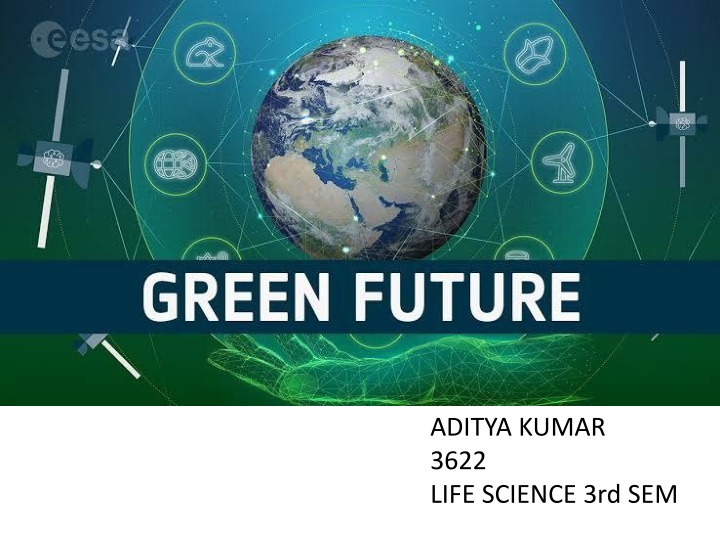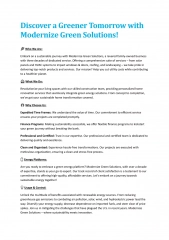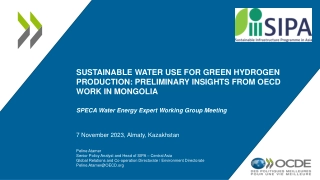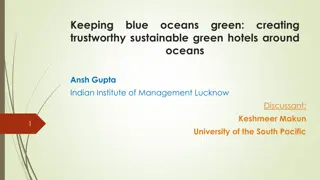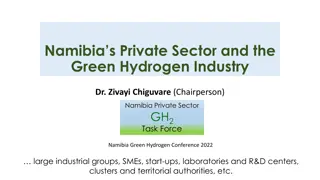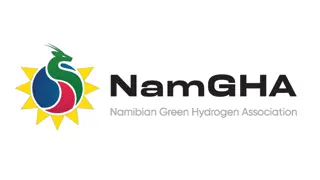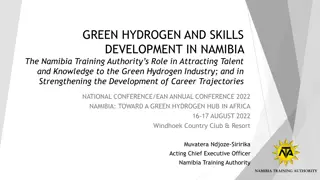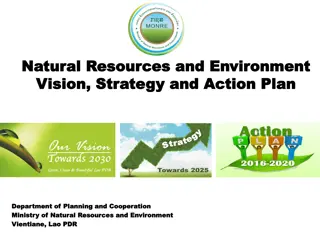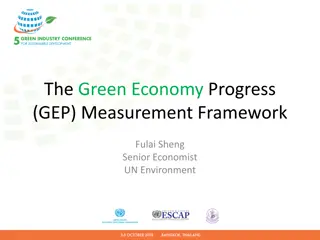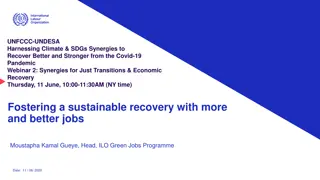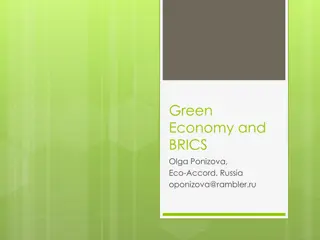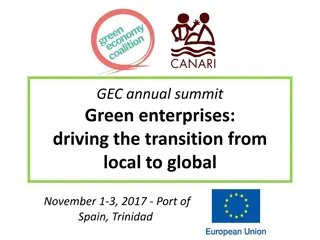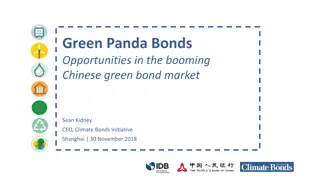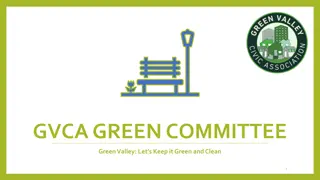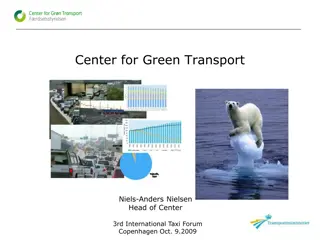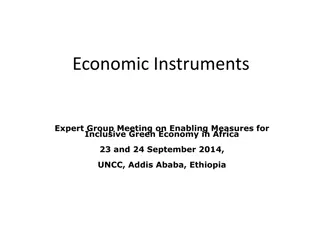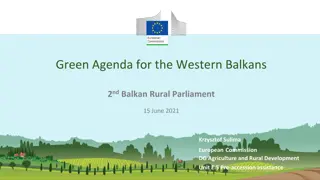Fostering Green Development for a Sustainable Future
Green future entails fostering economic growth while preserving natural assets. Agenda includes awareness, sustainable development, green building, renewable energy, and reducing carbon footprint. Green jobs promote environmental sustainability and eco-friendly economy. With a focus on ecological footprint, role of green technologies is essential for a balanced energy approach.
Download Presentation

Please find below an Image/Link to download the presentation.
The content on the website is provided AS IS for your information and personal use only. It may not be sold, licensed, or shared on other websites without obtaining consent from the author.If you encounter any issues during the download, it is possible that the publisher has removed the file from their server.
You are allowed to download the files provided on this website for personal or commercial use, subject to the condition that they are used lawfully. All files are the property of their respective owners.
The content on the website is provided AS IS for your information and personal use only. It may not be sold, licensed, or shared on other websites without obtaining consent from the author.
E N D
Presentation Transcript
GREEN FUTURE ADITYA KUMAR 3622 LIFE SCIENCE 3rd SEM
CONTENT Green future Agenda of green development Ecological footprint Role of green technology Challenges and implementation Green practices to conserve resources Green economy
Green future means fostering economic growth and development while ensuring that natural assets continue to provide the resources and environmental services on which our well-being relies.
AGENDA OF GREEN DEVELOPMENT Awareness Sustainable development Green building Renewable energy Reducing carbon footprint Green jobs
Awareness regarding a green future is essential for individuals, communities, businesses, and governments to make informed choices that contribute to a more sustainable and environmentally responsible world. Sustainable development is a concept that involves balancing economic, social, and environmental considerations to meet the needs of the present without compromising the ability of future generations to meet their own needs.
Green building, also known as sustainable or eco-friendly construction, refers to the design, construction, and operation. Green building practices aim to reduce energy consumption, water usage, and waste while providing healthier and more comfortable living and working environments. Green jobs are employment opportunities that contribute to environmental sustainability and promote environmentally friendly economy. These jobs are typically associated with industries and activities that aim to reduce environmental impact, conserve natural resources, and address climate change.
Ecological footprint The ecological footprint is a method promoted by the Global Footprint Network to measure human demand on natural capital, i.e. the quantity of nature it takes to support people and their economies. It tracks this demand through an ecological accounting system. Reduction of Ecological footprint Reduction of Ecological footprint Only buy what you need Reduce plastic waste Buy eco-friendly products Recycle paper, glass, metals, and plastics Use greener transportation
Role of Green technologies toward a sustainable future #1. Create a Balance of Energy Sources Reduce the usage of non-renewable energy so that the volume of consumed non-renewable energy matches the renewable energies used by the industries. #2. Save Renewable Energy Sources Save-Energy-Sources Control the consumption of renewable energy to a level where it does not cross its production volume.
#3. Save Nature From Over Exploitation Function as a technology process to ensure human and industrial activities do not exceed nature s regeneration and absorption capacity. #4. Replace Old Processes Seek out existing processes that harm the environment and replace them with innovative processes that do not damage the environment at the same rate as the old process did.
Challenges #1. Research and Development Most green tech products and concepts are in the R&D state. They need more research to arrive at the production level. #2. Lack of Investments Businesses know very well that global warming, arctic ice melting, and climate change will limit the profitability of conventional industries. Still, investors are not investing enough in green tech.
#4. Lack of Experts Green tech demands experts and talents who can carry out research and development. On the contrary, the world population supplies mostly unskilled laborers who can not effectively participate in green tech innovations.
Green practices to conserve resources Use of Alternative Sources of Power Such as Solar and Wind Energy Plant Trees to Prevent Soil Erosion Practicing Judicious Ways to Conserve Water in Our Homes Treatment of Industrial Wastes and Sewages Before They Are Released in The Water Bodies Use of Bio-Fuels Organic agriculture
Role of science in eco friendly technologies Innovation and Research Environmental Monitoring Understanding Environmental Issues Biotechnology Waste Management Urban Planning Green Chemistry Climate Modeling
Green Economy A green economy refers to an economic system that focuses on sustainable and environmentally friendly practices. It promotes the use of renewable energy, efficient resource utilization, reduced waste, and conservation of natural ecosystems. The goal is to balance economic growth with environmental protection and social well-being. Green economies aim to reduce carbon emissions, promote clean technologies, and create jobs in environmentally conscious sectors.
The transition to a green economy offers several significant benefits, including: Environmental Sustainability: Promotes the conservation of natural resources, reduces pollution, and minimizes environmental degradation, helping to protect ecosystems and biodiversity. Climate Change Mitigation: Reduces greenhouse gas emissions and contributes to global efforts to combat climate change, helping to limit global warming and its associated impacts. Energy Security: Increases reliance on renewable energy sources, reducing dependence on fossil fuels and enhancing energy security. Economic Growth: Generates new industries, jobs, and economic opportunities in areas such as renewable energy, sustainable agriculture, and green technologies. Improved Public Health: Reduces air and water pollution, leading to improved public health by lowering the incidence of respiratory illnesses and other pollution-related health issues.
